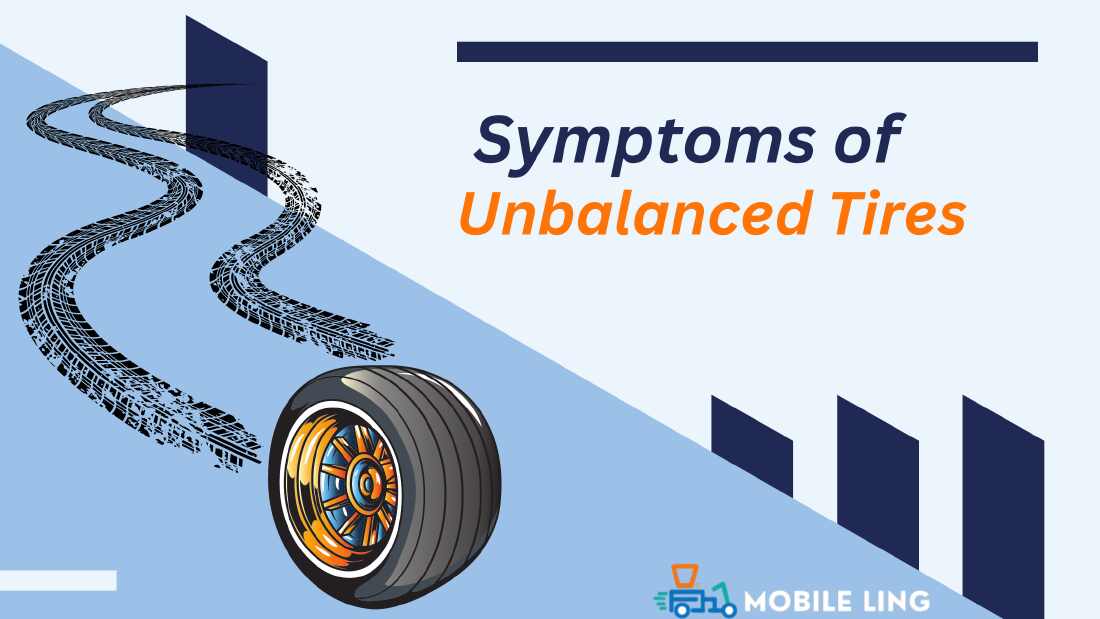Tire balance is a critical aspect of vehicle maintenance that ensures a smooth and comfortable ride. When a tire becomes unbalanced, it can lead to various issues, including increased tire wear, decreased fuel efficiency, and a rough driving experience. Recognizing the symptoms of unbalanced tires is essential for identifying the problem and taking appropriate action.
In this article, we will discuss six common symptoms of unbalanced tires and explore how to determine which tire is causing the imbalance.
6 Common Symptoms of Unbalanced Tires
Vibration and Shaking Sensation
One of the primary indicators of unbalanced tires is a noticeable vibration or shaking sensation while driving. The imbalance causes uneven weight distribution, resulting in the tire vibrating as it rotates. Initially, the vibration may be mild and increase in intensity as vehicle speed increases.
Typically, the vibration can be felt through the steering wheel, seat, or floorboard. To identify which tire is causing the issue, pay attention to the direction from which the vibration is most noticeable. It can help determine whether it’s a front or rear tire.
Uneven Tire Wear
Unbalanced tires often lead to uneven wear patterns on the tire surface. Examine each tire closely to check for signs of irregular wear. If one tire exhibits excessive wear on the outer or inner edges while the other tires seem relatively even, the imbalanced tire is likely causing the problem.
Cupping or scalloping, which manifests as small dents or ridges on the tire tread, can also result from tire imbalance.
Steering Wheel Pull
When a tire is out of balance, it can reason the vehicle to pull to one side. While this symptom can also indicate other issues, such as misalignment, a tire imbalance is often the culprit.
Find a straight and level road to determine which tire is causing the steering wheel to pull. Loosely grip the steering wheel and observe if your 30 inch wheels vehicle veers to the left or right. If it veers left, the right tire may be unbalanced, and vice versa.
Excessive Noise
Unbalanced tires can generate excessive noise, especially at higher speeds. As the tire rotates unevenly, it produces a humming or rumbling sound that can be heard inside the cabin. Pay attention to changes in the noise level while driving.
The noise can indicate a tire imbalance if it becomes more pronounced on specific road surfaces or at certain speeds. You can listen closely to each tire to identify the one producing the most noise.
Steering Wheel Oscillation
In severe cases of tire imbalance, you may experience steering wheel oscillation. This symptom refers to a rapid side-to-side movement of the steering wheel, which can be particularly pronounced when driving at high speeds.
The oscillation occurs due to the tire imbalance creating a significant vibration that affects the steering system. If you notice this symptom, it is crucial to address the issue promptly to avoid potential safety hazards.
Reduced Fuel Efficiency
Unbalanced tires can negatively impact fuel efficiency. When a tire is out of balance, it stresses the suspension system and requires the engine to work harder to maintain speed.
This increased workload results in higher fuel consumption. If you notice a sudden little drop in fuel efficiency or an increase in trips to the gas station, it’s worth considering tire imbalance as a potential cause. Keep track of your vehicle’s fuel economy and consult a professional if you suspect tire imbalance.
How to Determine Which Tire is Out of Balance?
Identifying the specific tire that is causing the imbalance requires a systematic approach. Here are a few methods you can use:
Identify the Symptoms
An unbalanced tire can cause certain symptoms, such as vibrations or shaking in the steering wheel, seat, or floorboard. Please pay attention to when these vibrations occur, as they can help pinpoint the affected tire.
Perform a Visual Inspection
Inspect each tire for any signs of damage, such as bulges, uneven wear patterns, or missing weights. Look for any irregularities that could indicate an out-of-balance condition.
Rotate the Tires
If you suspect a tire is out of balance but cannot identify which one, you can rotate the tires. For example, if the vibrations are felt in the steering wheel, you can rotate the front tires to the rear and vice versa. If the vibrations move to a different location, it suggests that the tire you moved is the one causing the imbalance.
Use a Balancing Machine
If you can access a tire balancing machine, you can take the tires to a professional tire shop or automotive service center. They will mount each tire on the machine, which will detect any imbalances and indicate the location and amount of weight needed to balance the tire. This method provides accurate and precise results.
Dynamic balancing
Another method is dynamic balancing, which requires driving the vehicle at a moderate speed (usually around 40-60 mph) while a technician uses specialized equipment to measure vibrations. The technician can then identify the imbalanced tire based on the data collected during the test.
Conclusion
Recognizing the common symptoms of unbalanced tires is vital for maintaining a safe and smooth driving experience. From vibrations and shaking sensations to uneven tire wear and reduced fuel efficiency, these indicators can help identify which tire is out of balance.
Remember to pay attention to the specific symptoms, observe changes while driving, and, if necessary, consult a professional tire technician for proper diagnosis and balancing. Regular tire maintenance and periodic balancing will not only extend the life of your tires but also contribute to a more comfortable and efficient ride.
Also Read:
- Movers And Packers In Dubai Marina: Affordable Moving Solution
- Top 10 Statistical Packages For PhD And Research Students




